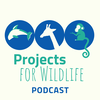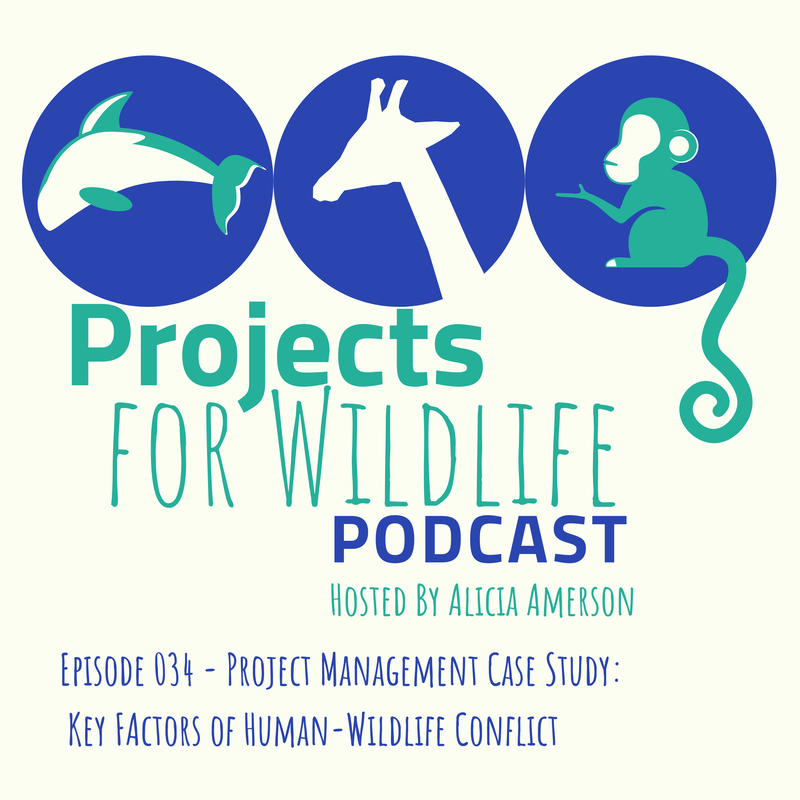Episode 034 - Project Management Case Study: Key Factors to Human Wildlife Conflict
Show Notes
In this episode I discuss the key factors driving human-wildlife conflict with the invitation for you contribute your thoughts about non-lethal management solutions in the free Projects For Wildlife Facebook group. I also focus on restored wolf populations and the opportunity to coexist with top predators in this episode.
To start off the episode I defined what human-wildlife conflict is and how this concept came into being and how it is transcending into a broader topic called biodiversity conflict and social-ecological systems. I reviewed two papers from Defenders of Wildlife (2016) and the other from Kansky and Knight (2014) as part of the case study review in this episode. These papers reflect the history of wolves and the benefits of reintroduction, while the other paper presents a metadata analysis of key factors driving human-wildlife conflict.
One of the most interesting facts presented about conflict in the Kansky and Knight paper suggests human wildlife conflicts is not necessarily a “conflict” since conflicts cannot occur between people and animals as animals cannot consciously engage in conflicts - so in this study they broke the term "conflict" into two components. "First, component is impacts that deal with direct interactions between humans and wildlife. And Second conflicts that center on human interactions between those seeking to conserve the species and those with other goals - (biodiversity conflicts)."
It's with interest in current theory of reintroduction and coexistence focused projects if the term conflict is outdated. Go over to the Projects For Wildlife Facebook group and let us know your thoughts!
This episode is not heavy into project management terminology, but reflects the need to broaden the discussion on how we describe our relationships with wildlife and how that terminology is presented in scientific publications, website content, social media, and public education. Perhaps the conflict is human-based only, and the wildlife are only interacting with us as a result of humans being in the same habitat.
Research Papers
Kansky and Knight (2014)
Weiss, Kroeger, Haney, and Fascione (2016)
Get your Project Manager Certification:
Project Management Institute
Books
PMBOK guide to Project Management 16th ed.
Project Planning and Management for Ecological Restoration (The Science and Practice of Ecological Restoration Series)
Human-Wildlife Interactions, Turning Conflict Into Coexistence by Beatrice Frank and Silvio Marchini
Wildlife and Society The Science of Human Dimensions by Michael Manfredo, Jerry Vaske, Perry Brown, Daniel Decker, and Esther Duke
To start off the episode I defined what human-wildlife conflict is and how this concept came into being and how it is transcending into a broader topic called biodiversity conflict and social-ecological systems. I reviewed two papers from Defenders of Wildlife (2016) and the other from Kansky and Knight (2014) as part of the case study review in this episode. These papers reflect the history of wolves and the benefits of reintroduction, while the other paper presents a metadata analysis of key factors driving human-wildlife conflict.
One of the most interesting facts presented about conflict in the Kansky and Knight paper suggests human wildlife conflicts is not necessarily a “conflict” since conflicts cannot occur between people and animals as animals cannot consciously engage in conflicts - so in this study they broke the term "conflict" into two components. "First, component is impacts that deal with direct interactions between humans and wildlife. And Second conflicts that center on human interactions between those seeking to conserve the species and those with other goals - (biodiversity conflicts)."
It's with interest in current theory of reintroduction and coexistence focused projects if the term conflict is outdated. Go over to the Projects For Wildlife Facebook group and let us know your thoughts!
This episode is not heavy into project management terminology, but reflects the need to broaden the discussion on how we describe our relationships with wildlife and how that terminology is presented in scientific publications, website content, social media, and public education. Perhaps the conflict is human-based only, and the wildlife are only interacting with us as a result of humans being in the same habitat.
Research Papers
Kansky and Knight (2014)
Weiss, Kroeger, Haney, and Fascione (2016)
Get your Project Manager Certification:
Project Management Institute
Books
PMBOK guide to Project Management 16th ed.
Project Planning and Management for Ecological Restoration (The Science and Practice of Ecological Restoration Series)
Human-Wildlife Interactions, Turning Conflict Into Coexistence by Beatrice Frank and Silvio Marchini
Wildlife and Society The Science of Human Dimensions by Michael Manfredo, Jerry Vaske, Perry Brown, Daniel Decker, and Esther Duke
Find the research papers discussed in the episode by clicking below.


